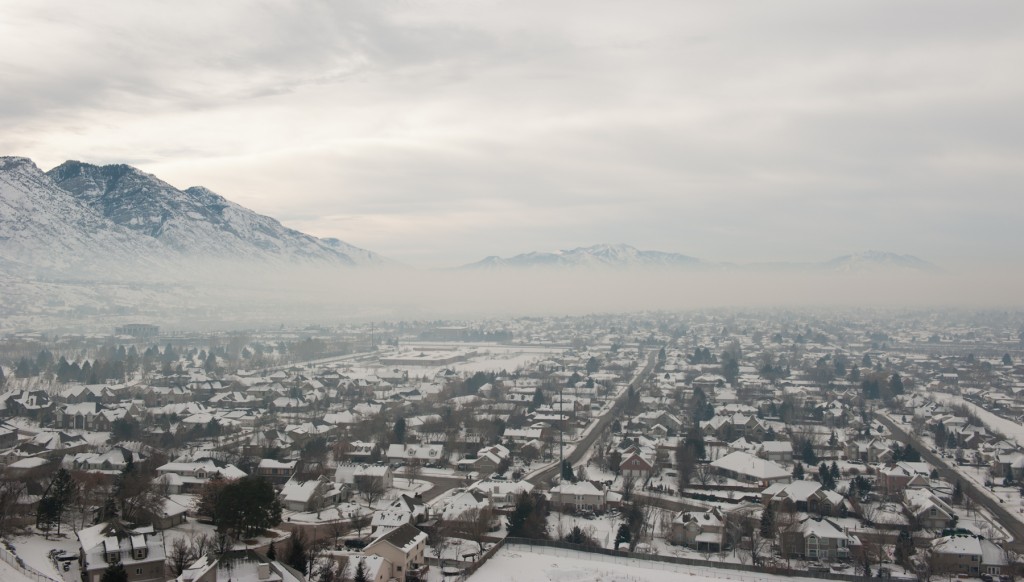
Each winter, Utahns experience a combination of winter snowstorms and smoggy skies from the inversions that trap pollutants in the sky.
In a normal weather condition, air is warmer near the ground and colder at higher altitudes, according to the Utah Division of Air Quality.
Sam Webber, a meterologist for the National Weather Service, said an inversion flips these normal weather conditions.
“We say inversions because the profile of the atmosphere is inverted, meaning that, you know, temperature is in the valley areas or the lower elevations are colder than they are at higher elevations,” Webber said.
Inversions typically occur after a strong snowstorm followed by a high pressure system, according to Webber.
High pressure systems are usually associated with clear blue skies and calm winds which reduce the natural mixing of cold and warm weather. These systems also increase the cooling of the air closer to the ground.
Predicting the number of inversions throughout the winter is nearly impossible due to the number of high and low pressure systems throuhgout the winter, Webber said.
Inversions can last for multiple days leading to poor air quality as the pollution accumulates near the surface, Becky Close, the policy manager at Utah’s Department of Environmental Quality, said.
“It’s basically like a lid on a bowl where the pollution just builds and builds every day underneath that lid on the bowl. And it is fairly unique to specifically basins, valleys and basins in the west,” Close said.
According to Webber, the haze typically associated with an inversion is merely the accumulation of all of the pollution in the air.
“When you have, you know, over 2 million people living within the Wasatch Front, that stuff can accumulate pretty rapidly. So that’s why we see a lot of that haze over time,” Webber said.
Close said particles like PM2.5 found in the polluted air can cause serious short and long term health problems.
PM2.5 particles are fine, inhalable particiles or droplets which are 30 times smaller than the width of a human hair, according to Utah’s Deparment of Environmental Quality.
“What’s concerning about PM2.5 in particular is that as you breathe in particles, your lungs can essentially filter out some of the larger particles, but when you get down to PM2.5, it’s small in size and can get into your lungs and into your bloodstream,” Close said.
Kim Frost, the executive director of Utah Clean Air Partnership, said inversions can double the amount of pollution in the air as the particles get trapped near the surface.
Frost said preventative measures are the most effective tool in reducing the amount of pollution from an inversion.
“The most important time is prior to an inversion so we don’t see that pollution trapped during an inversion,” Frost said.
The biggest contributor to the air pollution in Utah is from cars and trucks on the road, according to Close.
Using public transit or walking and biking trails to commute is a great way to cut down on emmissions, Frost said.
Reducing the amount of wood burning during the winter also helps reduce air pollution, according to Close.
“I think the ultimate goal for all of us is really to just improve the air such that individuals in the state have a better quality of life,” Close said.




